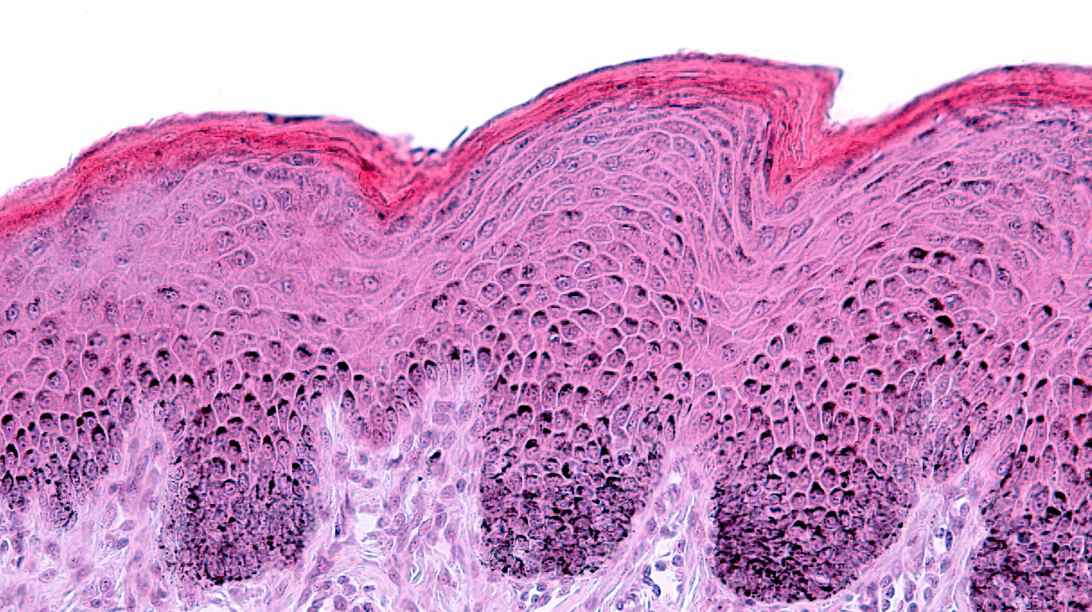Melanin: Your Skin’s Natural Pigment
What is Melanin? A Quick Overview
Melanin, our body’s natural pigment, adds colour to our skin, hair, and eyes.
More than just a colour agent, it’s our skin’s shield against the sun’s rays, crucial in protecting us from UV damage.
This pigment, varying in levels among people, is a key factor in our diverse skin tones.
Understanding melanin helps us take better care of our skin, from choosing the right sun protection to addressing various skin conditions.
Read more below to learn about melanin, which is vital for skin health and beauty.
Basic Functions of Melanin
Think of melanin as your skin’s personal sunblock, not just a colour creator for your skin, hair, and eyes.
It’s like a cosy blanket, absorbing the sun’s rays to keep your skin safe from UV damage, reducing risks like sunburn and other sun-related skin troubles.
Melanin even plays a part in protecting our eyes, acting like a natural sunshade. It filters out harmful UV and high-energy visible light, protecting the delicate structures within the eye. This filtering helps prevent damage to the retina and reduces the risk of conditions like macular degeneration.
Understanding melanin’s protective roles reminds us of its importance in keeping our skin happy and healthy.
How Melanin is Produced
Melanin production, a process called melanogenesis, happens in our skin cells known as melanocytes.
When triggered by factors like sunlight, these cells get to work. They create two types of melanin: eumelanin, which gives a brown or black colour, and pheomelanin, responsible for red and yellow tones.
The balance between these two types determines our unique skin and hair shades. This process is not just about beauty; it’s a critical part of our skin’s defence system against UV radiation.
Understanding melanogenesis helps us appreciate the intricate ways our body works to protect and beautify itself.
Factors Influencing Melanin Levels
Melanin levels in our bodies are shaped by a mix of factors.
Genetic factors
Genetics play a starring role in melanin levels. Our inherited genes dictate our natural skin, hair, and eye colours. For instance, some genes lead to higher melanin production, giving darker skin tones.
Environmental factors (like sun exposure)
Sunlight ramps up melanin production, leading to tanning. This natural response helps protect our skin from UV damage, a clever adaptation by our bodies to their environment.
Hormonal influences
Hormonal changes also have a part to play. They can influence melanin levels, as seen during pregnancy or puberty. For example, pregnancy can lead to increased melanin production, resulting in conditions like melasma.
Variations in Melanin
Melanin levels vary widely among individuals, creating a beautiful spectrum of skin tones. This diversity is shaped by our unique genetic makeup.
These variations also impact skin types, influencing how our skin reacts to sunlight and its susceptibility to conditions like sunburn or hyperpigmentation.
Understanding these differences is key to promoting healthy skin care practices tailored to each skin type’s needs and risks.
Melanin and Skin Conditions
Melanin imbalances can lead to various skin conditions.
Hyperpigmentation
Hyperpigmentation, like melasma, occurs when excess melanin forms dark patches on the skin. It’s often triggered by hormonal changes or sun exposure.
Hypopigmentation
On the other side, hypopigmentation, seen in conditions like vitiligo, involves a loss of melanin, resulting in lighter skin patches.
Both conditions highlight the delicate balance of melanin production in our bodies and the importance of understanding these variations for effective skin care and treatment strategies.
Caring for Your Skin
Caring for your skin, regardless of melanin level, involves several key practices.
Sun protection is crucial; using sunscreen and wearing protective clothing helps guard against UV damage.
Choosing skin care products that cater to your specific melanin level can enhance skin health. For example, higher melanin levels might need more moisturising elements.
Additionally, a balanced diet rich in antioxidants and a healthy lifestyle contribute significantly to skin health.
These practices collectively support maintaining healthy skin, respecting its unique needs and characteristics.
FAQs
Does more melanin mean better sun protection?
Yes, higher melanin levels offer more UV protection, but sunscreen is still essential for all skin types.
Can melanin levels change?
Yes, factors like sun exposure and hormonal changes can alter melanin levels.
Is melanin related to vitamin D absorption?
Yes, higher melanin levels from sunlight can reduce vitamin D synthesis.
Summary
Understanding melanin is key to maintaining skin health.
It’s not just about skin colour; melanin offers protection against UV damage, influencing skin care needs.
Variations in melanin levels lead to diverse skin tones and affect how we respond to sun exposure and skin conditions.
Knowledge about melanin informs our choices in sun protection, skin care products, and lifestyle habits.
Recognising the role of melanin can help us better care for our skin, celebrate its unique beauty, and address specific health concerns.
References and further reading
- Feng D, Fang Z, Zhang P. The melanin inhibitory effect of plants and phytochemicals: A systematic review. Phytomedicine [Internet]. 2022 [cited 2023 Dec 12]; 107:154449. Available from: https://www.sciencedirect.com/science/article/pii/S0944711322005384.
- Lerner AB, Fitzpatrick TB. BIOCHEMISTRY OF MELANIN FORMATION. Physiological Reviews [Internet]. 1950 [cited 2023 Dec 12]; 30(1):91–126. Available from: https://www.physiology.org/doi/10.1152/physrev.1950.30.1.91.
- Riley PA. Melanin. The International Journal of Biochemistry & Cell Biology [Internet]. 1997 [cited 2023 Dec 12]; 29(11):1235–9. Available from: https://www.sciencedirect.com/science/article/pii/S1357272597000137.
- El-Naggar NE-A, Saber WIA. Natural Melanin: Current Trends, and Future Approaches, with Especial Reference to Microbial Source. Polymers [Internet]. 2022 [cited 2023 Dec 12]; 14(7):1339. Available from: https://www.mdpi.com/2073-4360/14/7/1339.

